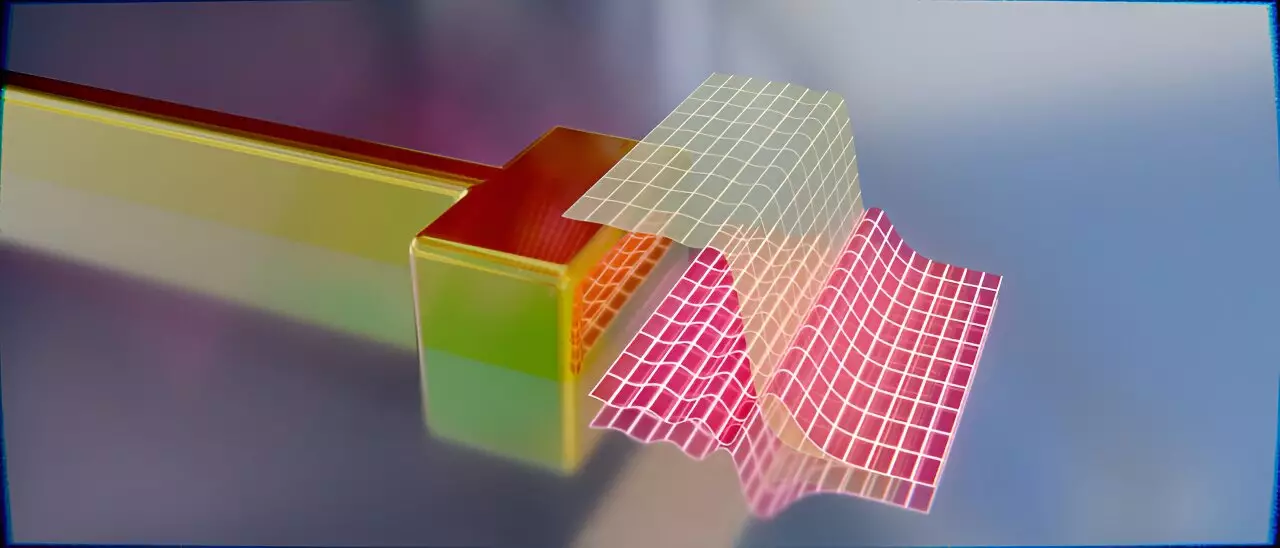The current landscape of computing technology is punctuated by a period of stagnation in speed enhancements. Traditional semiconductor-based systems are limited by the physical attributes of the materials they utilize, typically reaching frequencies in the gigahertz range. This limitation translates to a finite number of operations per second, almost capping the capabilities of modern processors. Consequently, to break the barrier imposed by individual chip speed, engineers have resorted to fabricating multi-chip systems that distribute computational workloads across various processors—an attempt to compensate for the slow nature of individual chips.
The search for more advanced, faster computing methods has led researchers to explore the potential of light-based technologies, specifically photonics. Leveraging the speed of photons over the sluggishness of electrons could allow systems to operate far beyond what is currently feasible. Recent advancements in plasmonic resonators offer a glimmer of hope for achieving this potential.
Plasmonic resonators, often likened to antennas for light, represent a pioneering concept in the realm of fast computing. These metal structures, on a nano-scale, engage in interactions between light and electrons, facilitating potential communication pathways that can be significantly quicker than conventional electrical systems. The fundamental principle rests on manipulating light within these minuscule structures, dependent on their tailored geometries to engage with various light frequencies effectively.
Despite the promise that plasmonic technologies hold, one significant hurdle remains: their modulation. The inability to modulate these resonators effectively restricts their application, particularly in creating high-speed light-based switches—a much-needed component for advanced computer architectures. Researchers from Julius-Maximilians-Universität (JMU) Würzburg and their partners in Denmark have recently taken meaningful steps to bridge this gap.
In a remarkable study published in the journal Science Advances, the JMU research team reported impressive progress in electrically steering plasmonic resonators for the first time. The innovative approach focused on altering the surface properties of a singular gold nanorod—rather than the whole resonator—using sophisticated nanofabrication techniques relying on helium ion beams. Though seemingly basic conceptually, the realization of this idea necessitated the application of advanced technological methods that have only recently matured.
The undertaking invites comparisons to earlier scientific phenomena like the Faraday cage, whereby external electromagnetic forces are countered by surface electrons, thus safeguarding internal components—in this case, the resonators. The implications are profound; these findings pave the way toward creating ultrafast light-based devices that could dramatically increase the efficiency of processing operations in computers.
Central to this advancement is the understanding of a unique interplay between classical and quantum physics. Traditional interpretations suggested that electrons demarcate at the edges of nanoparticles, much like the seabed meets the shoreline. However, emerging measurements indicate a quantum-seemingly undefined transition at the boundary between metal and air, where electrons appear to “smear” rather than stop sharply, suggesting a more intricate behavior reminiscent of a continuum rather than discrete units.
Collaboratively, theorists at Southern Denmark University engineered a semi-classical model to conceptualize these quantum attributes into a usable framework. This new paradigm allows for the prediction of various resonance behaviors resulting from surface alterations, enabling researchers to deliberately craft new antennas suited to specific applications.
The path forward is paved with not only theoretical advances but also vast potential applications. The ongoing research heralds the possibility of creating smaller, more efficient optical modulators that could have extensive technological implications, potentially revolutionizing how we approach data transfer and processing in a quantum computing age.
Beyond just computing enhancements, understanding the behaviors of electrons on surfaces could lead researchers to insights about catalytic processes, thereby influencing the realms of energy conversion and storage technologies. By integrating light-based technologies into our computing architectures, we stand on the cusp of a breakthrough era defined not just by speed, but by the transformative potential of how we harness the light itself to propel technology into uncharted territories.
As we push the boundaries of what is possible in computing, plasmonic resonators signal not just an evolution in speed but a reinvention of the principles that underpin our digital world. The light of tomorrow is being prepared, one surface interaction at a time.


Leave a Reply